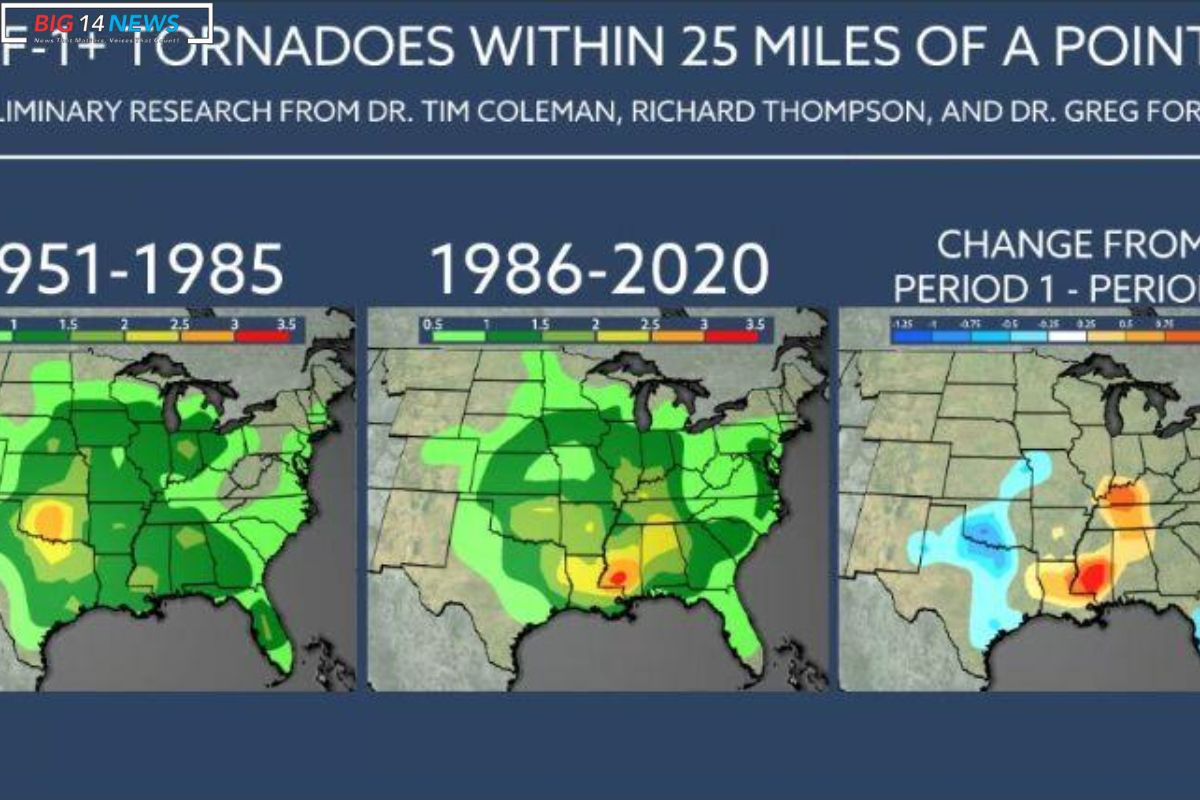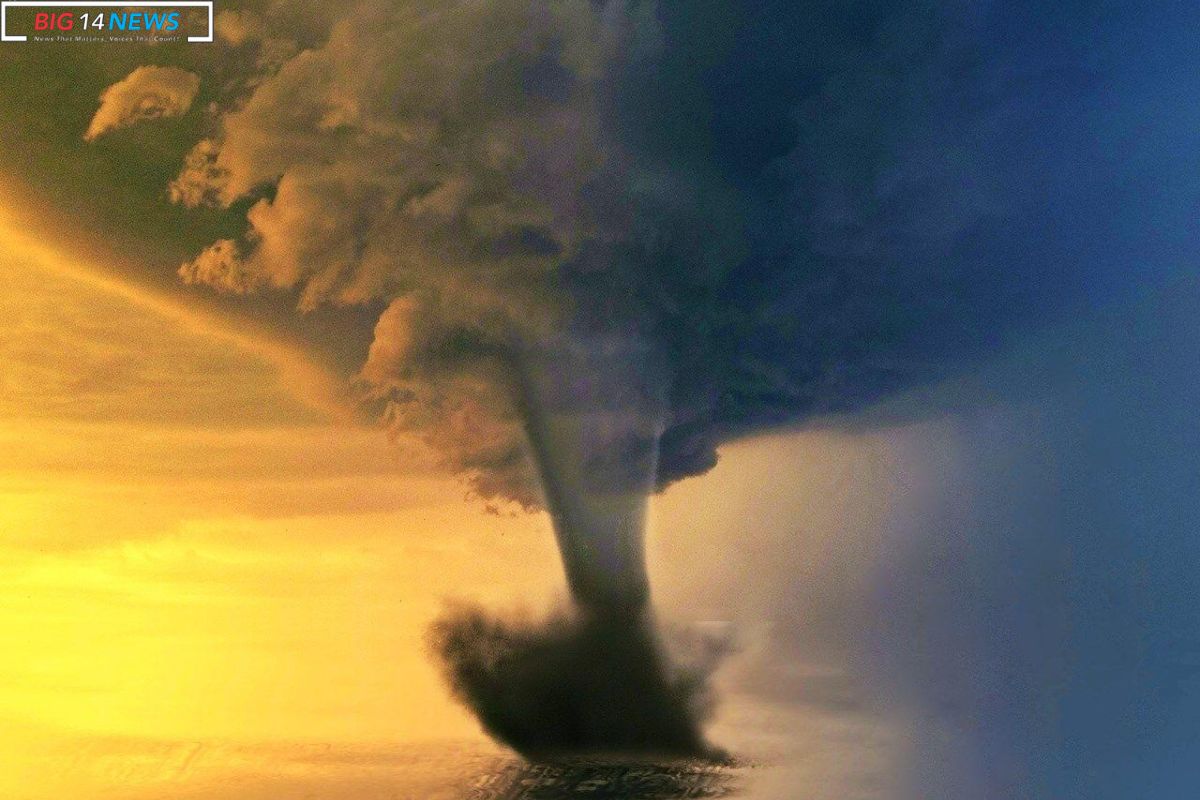Alabama Tornado Landscape Shift: Every year, the U.S. faces about 1,200 tornadoes, with a unique blend of Rockies’ cool air and Gulf of Mexico’s warmth fueling these explosive events. While the U.S. claims the top spot for tornado frequency globally, pinpointing the most vulnerable region has stirred debate.
The term “Tornado Alley,” coined in 1952 by Air Force meteorologists, originally spanned from Texas to the Dakotas. However, a notable uptick in tornado activity across the southeast challenges this traditional notion.
In 2014, Dr. Tim Coleman of the University of Alabama co-authored a groundbreaking study revealing the southeast, including Alabama, Mississippi, and Arkansas, witnessing more significant tornadoes than any other region.
Ongoing research, led by Dr. Coleman and co-authors Dr. Greg Forbes and Richard Thompson, suggests a rise in weak tornadoes, attributed to enhanced spotting techniques and improved radar detection.
Excluding EF-0 tornadoes, U.S. tornado trends remained steady from 1950 to 2020. The shift in EF-1+ tornado concentration is strikingfrom Kansas, Oklahoma, and Texas (1951-1985) to Louisiana, Mississippi, and Alabama (1986-2020).
Tornado frequency, path length, and the rising occurrence of cold-season and nighttime tornadoes underscore the southeast’s vulnerability. This shift poses higher risks due to increased structures and population density compared to the Great Plains.


ALSO READ: Alabama Dry Spell Sparks Multiple Fires: Forestry Leaders Issue Serious Warning
A study exploring temperature’s impact on tornado geography highlights a connection between warmer years and an eastward shift in tornado activity. Warmer air holding more moisture becomes a crucial ingredient for tornado-producing storms.
Natural climate events like ocean temperature oscillations, such as the Atlantic Multi-decadal Oscillation, lasting up to 80 years, may contribute. However, with only 70 years of reliable tornado data, drawing definitive conclusions remains challenging.
Uncertainty looms over whether this growing tornado trend in North Alabama will persist. Dr. Coleman emphasizes the need for ongoing preparedness. While tornadoes are most common in March and April, November is surprisingly active in Alabama. Multiple warning sources, from tornado sirens to TV and NOAA Weather Radio, are crucial for staying safe during unpredictable storms.
Also Read: Alabama Historic Law Exempts Overtime Pay: from Income Tax for Hourly Workers
Our Reader’s Queries
Is Tornado Alley really shifting?
Over the past thirty years, the country has undergone a significant transition, as researchers have discovered a notable increase in severe tornadoes hundreds of miles away from the previous hotspots. This shift is occurring in the southeast, specifically in “Dixie Alley,” an area known for its history of extremely violent tornadoes.
What part of Alabama is Tornado Alley?
Alabama may not be included in Tornado Alley, but it falls within the tornado-prone Dixie Alley, which is the Southern equivalent of Tornado Alley. This region experiences a significantly higher number of twisters each year compared to other areas of the U.S.
How does landscape affect tornadoes?
Tornadoes can happen anywhere, but they’re more likely in open areas, especially ones that are flat. Regions with wide open spaces are at higher risk for tornadoes than places with hills or mountains. Explore more about tornadoes and how they affect the environment and people with these helpful resources.
How big was the tornado in Alabama 2023?
At this spot, the tornado reached its peak with wind speeds of 93mph and a width of 50 yards, snapping trees 2-5 feet from their bases. Moving south and east, it caused scattered tree damage along Cherry Tree Road next to Goose Creek.

